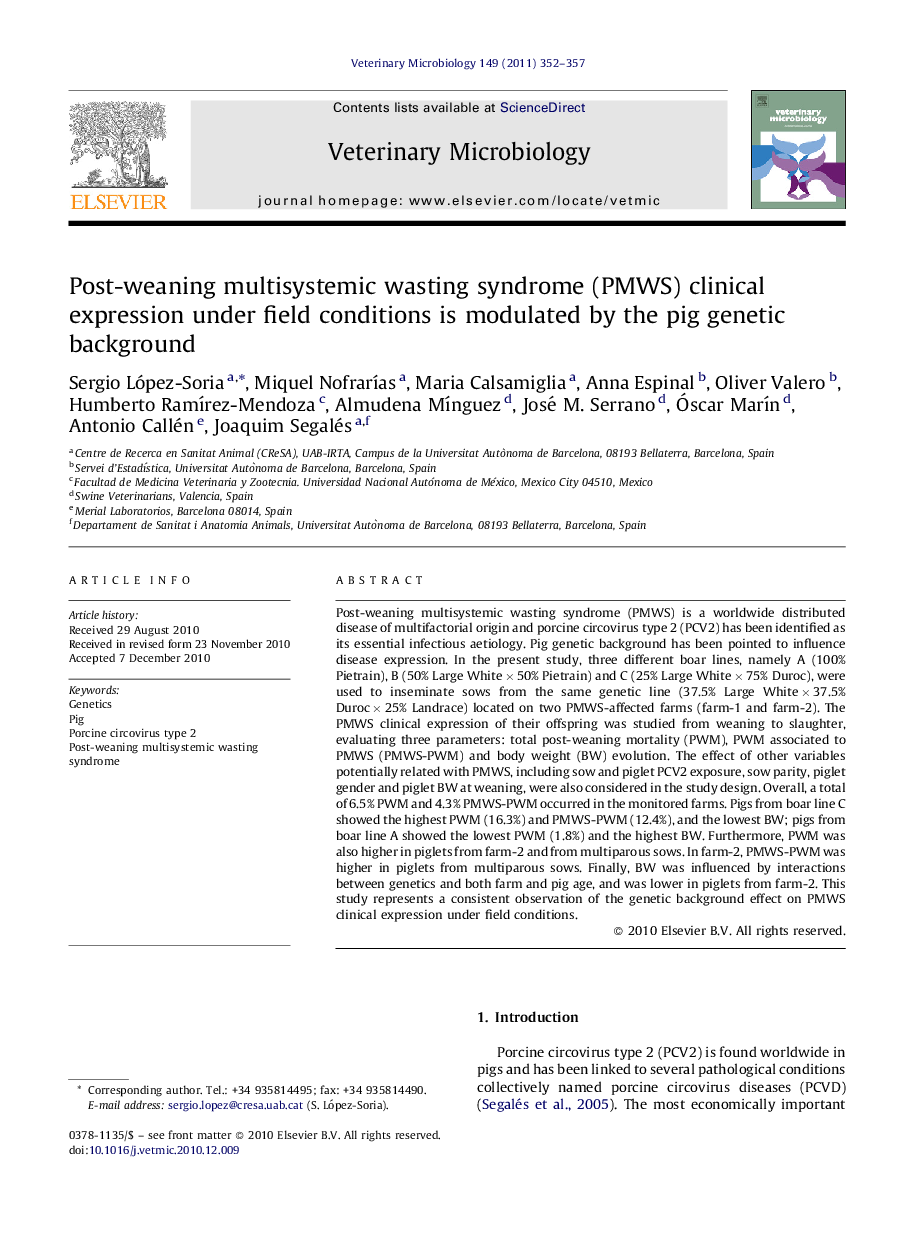| Article ID | Journal | Published Year | Pages | File Type |
|---|---|---|---|---|
| 5801577 | Veterinary Microbiology | 2011 | 6 Pages |
Post-weaning multisystemic wasting syndrome (PMWS) is a worldwide distributed disease of multifactorial origin and porcine circovirus type 2 (PCV2) has been identified as its essential infectious aetiology. Pig genetic background has been pointed to influence disease expression. In the present study, three different boar lines, namely A (100% Pietrain), B (50% Large White Ã 50% Pietrain) and C (25% Large White Ã 75% Duroc), were used to inseminate sows from the same genetic line (37.5% Large White Ã 37.5% Duroc Ã 25% Landrace) located on two PMWS-affected farms (farm-1 and farm-2). The PMWS clinical expression of their offspring was studied from weaning to slaughter, evaluating three parameters: total post-weaning mortality (PWM), PWM associated to PMWS (PMWS-PWM) and body weight (BW) evolution. The effect of other variables potentially related with PMWS, including sow and piglet PCV2 exposure, sow parity, piglet gender and piglet BW at weaning, were also considered in the study design. Overall, a total of 6.5% PWM and 4.3% PMWS-PWM occurred in the monitored farms. Pigs from boar line C showed the highest PWM (16.3%) and PMWS-PWM (12.4%), and the lowest BW; pigs from boar line A showed the lowest PWM (1.8%) and the highest BW. Furthermore, PWM was also higher in piglets from farm-2 and from multiparous sows. In farm-2, PMWS-PWM was higher in piglets from multiparous sows. Finally, BW was influenced by interactions between genetics and both farm and pig age, and was lower in piglets from farm-2. This study represents a consistent observation of the genetic background effect on PMWS clinical expression under field conditions.
